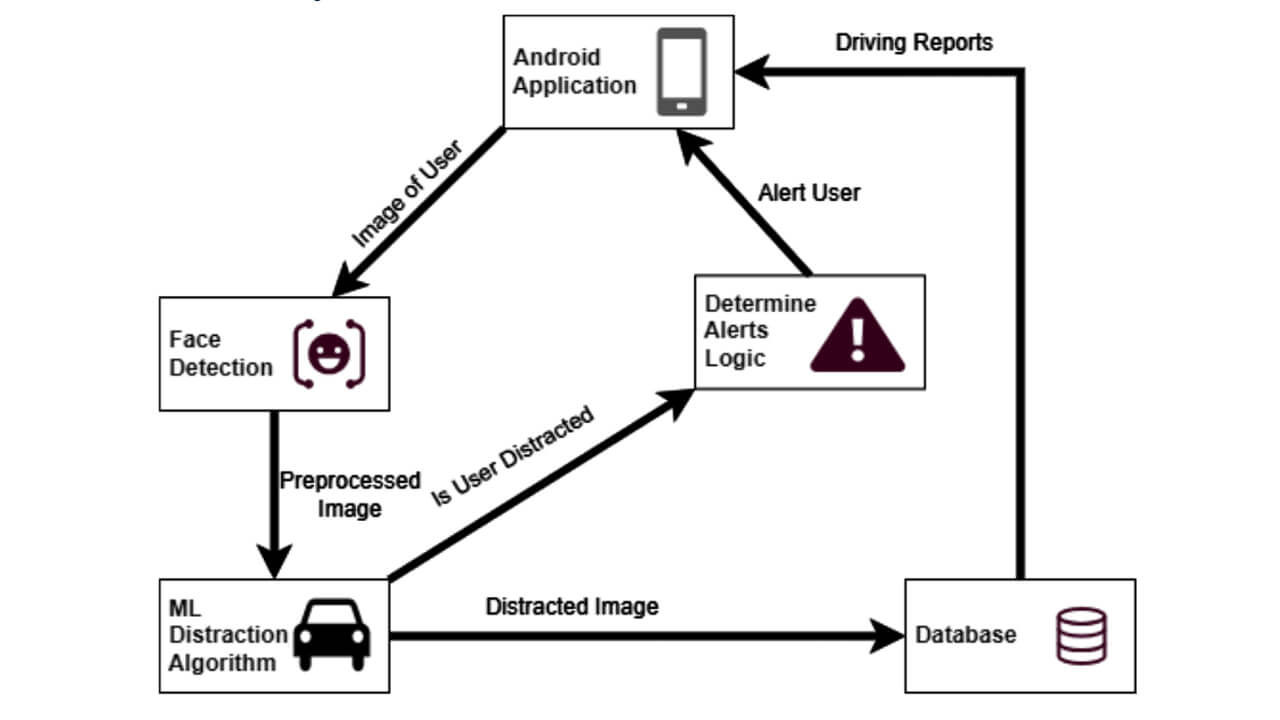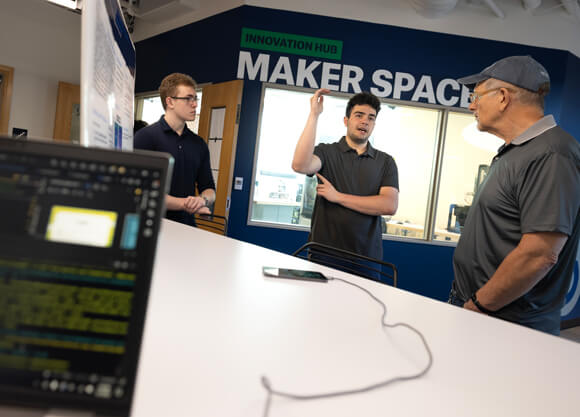
DriveAware distraction detection model
Convolutional Neural Network (CNN) design
Computer Science

Computer Science
A team of computer science students developed an Android app to combat distracted driving. This app was created for CSC 491: Senior Project I and CSC 492: Senior Project II.
DriveAware is an Android app that uses a smartphone’s camera to track eye movements and detect distractions—eliminating the need for specialized hardware. When distraction or drowsiness is detected, the app issues auditory and visual alerts.

Computer Science
School of Computing & Engineering

Computer Science
School of Computing & Engineering

Computer Science
School of Computing & Engineering
Distracted driving is a major issue in today's technology-driven world, yet most solutions are costly or require complex setups. To address this, we developed DriveAware, an Android app that uses a smartphone’s camera to track eye movements and detect distractions—eliminating the need for specialized hardware. When distraction or drowsiness is detected, the app issues auditory and visual alerts. Using MediaPipe and machine learning, DriveAware operates seamlessly in the background with an intuitive interface.
System Architecture
Evaluation
The DriveAware distraction detection model is a Convolutional Neural Network (CNN) designed to classify whether a driver is focused or distracted based on various images of the user’s eyes. The input consists of 64x64 grayscale images of the driver's eyes.
Steps for Distraction Algorithm:
DriveAware is an Android app that uses AI and smartphone cameras to detect distracted driving in real-time.
DriveAware offers a free, accessible solution using existing smartphones.
This serves as an overview of the project and does not include the complete work. To further discuss this project, please email Caden Effrece.
CSC 491: Senior Project I is the first part of a two-semester, capstone experience for computer science students. Students analyze and develop a solution to a major project that requires integration and application of knowledge and skills acquired in earlier coursework. Students develop professional experience by working on a team and communicating progress and results to a variety of audiences. Students explore the ethical and legal responsibilities of a computing professional.
CSC 492: Senior Project II is the second part of a two-semester, capstone experience for computer science students. Students implement and evaluate a solution to a major project that requires integration and application of knowledge and skills acquired in earlier coursework. Students continue to develop professional skills in teamwork and communications, and knowledge of their responsibilities as computing professionals.
We've sorted each of our undergraduate, graduate and doctoral programs into unique Areas of Interest. Explore these categories to discover which programs and delivery methods best align with your educational and career goals.